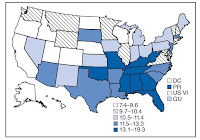 Tonight marks the end of daylight saving time. The return to standard time officially occurs at 2 a.m. Sunday morning.
Tonight marks the end of daylight saving time. The return to standard time officially occurs at 2 a.m. Sunday morning.This means you get an extra hour in your day. This is a great opportunity to catch up on your sleep!
To get an extra hour of sleep, you should go to bed at your normal bedtime. Then set all your clocks back an hour just before getting into bed.
Lifestyle choices, personal obligations and occupational demands can cause you to become sleep deprived. Ongoing sleep disorders or medical conditions can also cause sleep deprivation. When you are constantly getting less sleep than you need, you develop what is known as a ‘sleep debt’.
Sleep deprivation is linked with increased risk for obesity, illness and death. It can also lead to decreased alertness and performance during the day.
According to a study presented at SLEEP 2009, watching television is currently the most influential cue people use to decide when to go to bed.
Authors of the study say that people can reduce their sleep debt by watching less TV at night and going to bed earlier. You can also eliminate your sleep debt by sleeping for longer time periods each night and improving your sleep hygiene.
Sleep experts recommend that adults sleep between seven and eight hours each night.
Learn more about sleep deprivation at Sleep Education.com.
Visit an AASM-accredited sleep disorders center if you have an ongoing sleep problem.
















